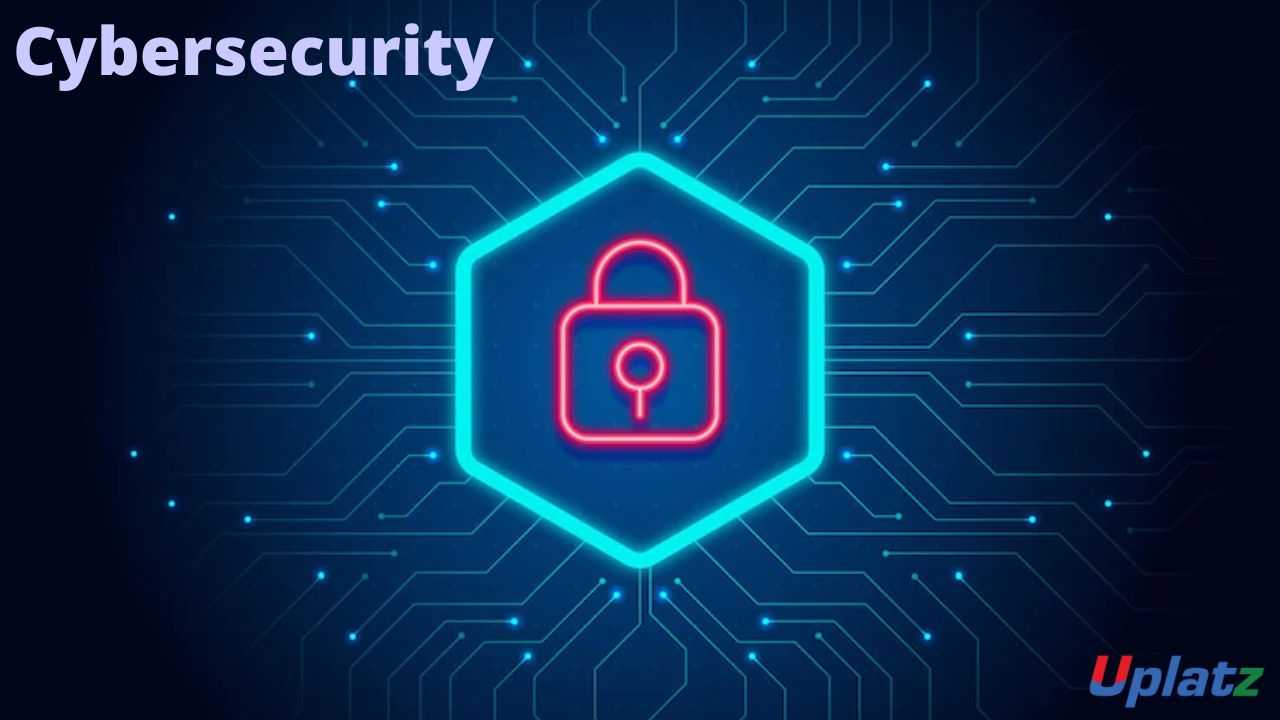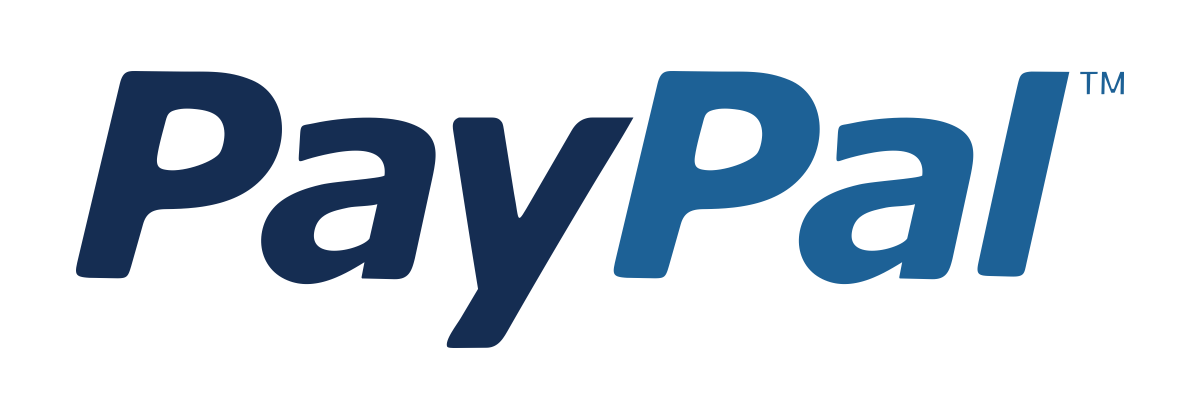Kali Linux
Master Kali Linux from scratch and learn to perform ethical hacking and penetration testing with practical, hands-on strategies.
Course Duration: 10 Hours
Preview Kali Linux course
Price Match Guarantee Full Lifetime Access Access on any Device Technical Support Secure Checkout Course Completion Certificate 92% Started a new career
BUY THIS COURSE (
92% Started a new career
BUY THIS COURSE (GBP 12 GBP 29 )-
 83% Got a pay increase and promotion
83% Got a pay increase and promotion
New & Hot
Trending
Job-oriented
Coming soon (2026)
Students also bought -
-

- QRadar
- 10 Hours
- GBP 12
- 10 Learners
-

- Cybersecurity in a nutshell
- 2 Hours
- GBP 12
- 21 Learners
-

- Linux System Administration
- 5 Hours
- GBP 12
- 28 Learners

Kali Linux Online course
Kali Linux Mastering Ethical Hacking and Penetration Testing is a comprehensive, self-paced online course meticulously designed to equip aspiring cybersecurity professionals, ethical hackers, and tech enthusiasts with the indispensable skills needed to navigate and master the powerful Kali Linux operating system. This course transforms beginners into proficient practitioners, capable of utilizing Kali Linux for a wide array of cybersecurity tasks, from vulnerability assessment to advanced penetration testing and digital forensics. Whether you are taking your first steps into the intricate world of cybersecurity or looking to significantly enhance your existing skill set with a robust, industry-standard tool, this course offers an unparalleled foundation, extensive practical experience, and precise, step-by-step guidance for building and deploying real-world cybersecurity strategies.
Kali Linux Mastering Ethical Hacking and Penetration Testing is a comprehensive, self-paced online course meticulously designed to equip aspiring cybersecurity professionals, ethical hackers, and tech enthusiasts with the indispensable skills needed to navigate and master the powerful Kali Linux operating system. This course transforms beginners into proficient practitioners, capable of utilizing Kali Linux for a wide array of cybersecurity tasks, from vulnerability assessment to advanced penetration testing and digital forensics. Whether you are taking your first steps into the intricate world of cybersecurity or looking to significantly enhance your existing skill set with a robust, industry-standard tool, this course offers an unparalleled foundation, extensive practical experience, and precise, step-by-step guidance for building and deploying real-world cybersecurity strategies.
At its core, Kali Linux is a specialized Debian-derived Linux distribution tailored for penetration testing and digital forensics. Unlike general-purpose operating systems, Kali Linux comes pre-loaded with hundreds of tools, categorized and configured for offensive and defensive security operations. This unique advantage is leveraged throughout this course, ensuring that learners are not just introduced to concepts but are immersed in a hands-on, tool-centric learning experience. The course begins with the absolute basics of Linux command-line operations, steadily progressing to the most advanced Kali-specific tools and methodologies, all while maintaining an engaging, project-driven learning curve. This approach ensures that every concept learned is immediately applicable and reinforces a practical understanding of how real-world security assessments are conducted.
Through an in-depth, hands-on approach, this course covers everything necessary to become proficient in Kali Linux and its vast ecosystem of tools. You will begin with the fundamentals – setting up your Kali Linux environment, understanding the Linux file system, basic commands, and shell scripting. As you progress, you will delve into reconnaissance and information gathering, network scanning, vulnerability analysis, exploitation techniques, post-exploitation, web application penetration testing, wireless attacks, and even an introduction to digital forensics. Each module is designed to provide practical experience with widely used tools such as Nmap, Metasploit, Wireshark, Burp Suite, Aircrack-ng, and many more. By the end of this course, you will not only be familiar with these tools but will also understand the underlying principles of cybersecurity attacks and defenses, enabling you to apply your knowledge to real-world scenarios.
The unique aspect of this course lies in its practical, scenario-based learning methodology. We don't just teach you how to use a tool; we teach you why and when to use it, and how to interpret the results. You will work through numerous simulated scenarios, ranging from auditing network security to exploiting vulnerable systems in a controlled lab environment. This hands-on experience is crucial for developing the critical thinking and problem-solving skills essential for a successful career in cybersecurity. Furthermore, the course emphasizes understanding the ethical implications of these powerful tools, promoting responsible and legal use for security improvement.
By the end of the course, you will have built multiple real-world projects and conducted comprehensive simulated penetration tests. These aren't just exercises; they are portfolio-ready engagements that showcase your ability to plan, execute, and report on security assessments using Kali Linux. You will learn how to:
- Set up and configure your Kali Linux environment securely for penetration testing and ethical hacking.
- Perform extensive reconnaissance and information gathering using tools like Maltego, theHarvester, and OSINT techniques.
- Conduct thorough network scanning and enumeration to identify open ports, services, and potential vulnerabilities with Nmap.
- Analyze network traffic using Wireshark to understand communication patterns and identify anomalies.
- Identify and exploit vulnerabilities in systems and applications using Metasploit Framework.
- Perform web application penetration testing to uncover common web vulnerabilities like SQL Injection, XSS, and broken authentication with Burp Suite.
- Master wireless network attacks including WEP, WPA/WPA2 cracking with Aircrack-ng.
- Execute post-exploitation techniques such as privilege escalation, lateral movement, and maintaining persistence.
- Understand fundamental concepts of digital forensics for incident response and evidence collection.
- Generate professional penetration test reports, detailing findings, risks, and recommendations.
This course goes beyond simply teaching you the tools; it helps you understand the entire lifecycle of a penetration test and how real-world cybersecurity operations work. Whether your goal is to become a certified ethical hacker, land a job as a penetration tester, enhance your defensive security skills, or simply understand how systems are attacked to better protect them, this course is the definitive gateway to achieving those ambitions.
What You Will Gain
By the end of the course, you will have conducted multiple real-world simulated engagements, such as:
- A comprehensive network penetration test covering reconnaissance, scanning, exploitation, and post-exploitation.
- A web application vulnerability assessment on a deliberately vulnerable web application, identifying and exploiting common flaws.
- A wireless network security audit, demonstrating the process of cracking Wi-Fi passwords and assessing wireless security.
- A basic digital forensics investigation, demonstrating how to recover deleted files and analyze system logs.
These projects aren't just for practice—they serve as portfolio-ready engagements that showcase your ability to perform security assessments and apply ethical hacking methodologies using Kali Linux.
But this course goes beyond using tools—it helps you understand how real-world cybersecurity works. You'll learn how to:
- Perform reconnaissance and information gathering effectively.
- Conduct network and vulnerability scanning to identify weak points.
- Exploit various system and application vulnerabilities in a controlled environment.
- Implement post-exploitation techniques to maintain access and elevate privileges.
- Secure your systems by understanding common attack vectors and vulnerabilities.
- Develop professional penetration testing reports with actionable recommendations.
Who This Course Is For
This course is perfect for:
- Aspiring Cybersecurity Professionals who want to enter ethical hacking and penetration testing.
- Students and Beginners in programming and networking looking for a structured and approachable course in cybersecurity.
- IT Professionals and System Administrators who want to understand offensive security to better defend their systems.
- Entrepreneurs and Freelancers who want to offer penetration testing services.
- Tech Enthusiasts aiming to understand the practical aspects of cybersecurity and how attacks are performed.
Regardless of your starting point, the course is structured to take you from zero to confidently performing security assessments with clarity and confidence.
How to Use This Course Effectively
To maximize your learning and apply your skills effectively, follow these tips for using the course:
- Follow the Sequence The course is designed to build progressively on knowledge. Start from the first module and move forward in order. Each concept introduces new techniques while reinforcing previously learned skills. Skipping ahead may cause confusion later, especially in projects that require cumulative understanding.
- Build Alongside the Instructor Hands-on practice is essential. As you watch the video tutorials, execute the commands and tools in your own Kali Linux environment (virtual machine recommended). Don’t just observe—type the commands yourself, experiment with variations, and troubleshoot errors. This repetition will solidify your learning and build real-world problem-solving skills.
- Use the Projects as Practice and Portfolio Pieces Each project you build during the course has real-world value. Customize them, add your own techniques, and consider documenting your findings for a portfolio. These projects can become part of your portfolio when applying for cybersecurity jobs or freelance gigs.
- Take Notes and Bookmark Key Concepts Keep a cybersecurity journal. Write down important commands, tool syntax, methodologies, and lessons learned. Bookmark the modules covering key concepts like reconnaissance, exploitation, or web application testing for quick reference.
- Utilize the Community and Support Resources If the course offers a discussion forum, Discord group, or Q&A section, use it! Ask questions when you're stuck and help others when you can. Participating in a community will deepen your understanding and expose you to diverse perspectives and solutions.
- Explore Tools and Documentation Beyond the Course Kali Linux has an immense ecosystem of tools, and this course introduces many of them. You’re encouraged to explore their official documentation further. Developing the habit of reading official tool documentation will make you a more independent and resourceful cybersecurity professional.
- Practice in a Lab Environment Safely Always practice ethical hacking techniques in a controlled, isolated lab environment (e.g., virtual machines) where you have explicit permission. Never use these tools or techniques on systems you do not own or have permission to test. The experience of breaking and fixing things in a safe space is invaluable.
- Review and Revisit Cybersecurity is a skill built through repetition and iteration. Don’t be afraid to revisit previous lessons or re-perform a simulated penetration test from scratch. Each time you do, you’ll catch something new or improve your understanding and efficiency.
Why Learn Kali Linux?
Kali Linux is the de facto standard operating system for ethical hacking and penetration testing due to its vast collection of pre-installed tools, active development, and strong community support. It’s trusted by cybersecurity professionals, security researchers, and organizations worldwide for its comprehensive capabilities in vulnerability assessment, exploitation, and forensics. Learning Kali Linux gives you direct access to a powerful arsenal of tools and teaches you valuable concepts applicable to any role in offensive or defensive cybersecurity. This course not only teaches you Kali Linux—it empowers you to conduct real security assessments, understand the attacker's mindset, and contribute to a more secure digital world. It’s practical, engaging, and career-oriented. Whether you're learning Kali Linux for a job, a personal project, or to enhance your organization's security posture, this course provides the foundation and confidence to succeed. Start today, and begin building the skills to secure, analyze, and protect digital assets.
Course/Topic 1 - Coming Soon
-
The videos for this course are being recorded freshly and should be available in a few days. Please contact info@uplatz.com to know the exact date of the release of this course.
Course Objectives Back to Top
By the end of this course, you will be able to:
- Understand the fundamental architecture and components of the Kali Linux operating system.
- Navigate the Kali Linux command-line interface efficiently and perform essential system administration tasks.
- Conduct comprehensive reconnaissance and information gathering using various open-source intelligence (OSINT) tools.
- Perform network scanning, port enumeration, and service identification using Nmap.
- Identify and analyze vulnerabilities in systems and applications using vulnerability scanners and manual techniques.
- Utilize the Metasploit Framework for exploitation and post-exploitation activities.
- Perform web application penetration testing to discover and exploit common web vulnerabilities.
- Execute wireless network attacks and understand Wi-Fi security protocols.
- Understand the basics of digital forensics and incident response.
- Apply best practices for ethical hacking, reporting, and maintaining a secure testing environment.
Course Syllabus Back to Top
Kali Linux Course Syllabus
Module 1: Getting Started with Kali Linux
- Introduction to Kali Linux and Ethical Hacking
- Setting Up Your Kali Linux Environment (VMware/VirtualBox)
- Basic Linux Commands and File System Navigation
- Linux Permissions and User Management
Module 2: Network Fundamentals for Hacking
- Networking Basics (TCP/IP, Ports, Protocols)
- Network Topologies and Devices
- Understanding IP Addressing and Subnetting
Module 3: Reconnaissance and Information Gathering
- Passive Reconnaissance (OSINT techniques, Google Dorking)
- Active Reconnaissance (DNS enumeration, Whois)
- Using Maltego and theHarvester
Module 4: Network Scanning and Enumeration
- Introduction to Nmap (Port scanning, Service detection, OS detection)
- Advanced Nmap Scripting Engine (NSE)
- Enumerating SMB, SMTP, SNMP
Module 5: Vulnerability Analysis
- Introduction to Vulnerability Assessment
- Using Vulnerability Scanners (e.g., OpenVAS, Nessus overview)
- Manual Vulnerability Identification
Module 6: Exploitation with Metasploit Framework
- Metasploit Basics (msfconsole, payloads, exploits)
- Exploiting Client-Side Vulnerabilities
- Exploiting Server-Side Vulnerabilities
Module 7: Post-Exploitation
- Meterpreter Commands and Usage
- Privilege Escalation Techniques (Linux and Windows)
- Maintaining Persistence
Module 8: Web Application Penetration Testing
- Introduction to Web Vulnerabilities (OWASP Top 10)
- Using Burp Suite for Web App Testing
- SQL Injection, Cross-Site Scripting (XSS), Broken Authentication
Module 9: Wireless Network Hacking
- Introduction to Wireless Security (WEP, WPA/WPA2)
- Aircrack-ng Suite for Wi-Fi Cracking
- Deauthentication Attacks and Rogue Access Points
Module 10: Password Attacks
- Password Cracking Techniques (Dictionary, Brute-Force, Hybrid)
- Using Hashcat and John the Ripper
- Rainbow Tables and Password Security
Module 11: Social Engineering and Phishing (Conceptual)
- Understanding Social Engineering Principles
- Common Social Engineering Attacks
- Phishing and Spear Phishing Concepts
Module 12: Digital Forensics Basics
- Introduction to Digital Forensics
- Evidence Collection and Preservation
- Basic File Recovery and Analysis
Module 13: Reporting and Ethics
- Penetration Testing Reporting Best Practices
- Ethical Hacking Guidelines and Legal Considerations
- Career Paths in Cybersecurity
Modules 14: Project-Based Learning
- Simulated Corporate Network Penetration Test
- E-commerce Web Application Security Audit
- Wireless Network Security Assessment of a Small Office
- Home Network Security Audit
- Basic Incident Response Scenario
- CTF (Capture The Flag) Challenges
- Red Team/Blue Team Simulation Introduction
- Bug Bounty Reconnaissance Project
- Security Blog/Documentation Project
Module 15: Kali Linux Interview Questions & Answers
- Top Interview Questions for Ethical Hacking Roles
- Best Practices and Explanations
- Certification
Certification Back to Top
Upon successful completion of the course, learners will receive an industry-recognized Certificate of Completion from Uplatz that validates their skills in Kali Linux and ethical hacking. This certification serves as a powerful addition to a resume or LinkedIn profile, demonstrating a candidate’s proficiency in penetration testing methodologies, vulnerability analysis, and the practical application of Kali Linux tools. It helps professionals stand out in job interviews and increases credibility when applying for roles such as Penetration Tester, Ethical Hacker, Security Analyst, or Cybersecurity Consultant. The certificate reflects both theoretical understanding and practical experience gained through hands-on projects, making learners job-ready.
Career & Jobs Back to Top
Kali Linux skills are in high demand in the rapidly growing cybersecurity industry, especially among organizations seeking to bolster their defensive capabilities by understanding offensive tactics. Completing this course prepares learners for roles such as:
- Ethical Hacker
- Penetration Tester
- Security Analyst
- Vulnerability Assessor
- Cybersecurity Consultant
- IT Security Specialist
Professionals with Kali Linux skills can pursue job opportunities at tech companies, cybersecurity firms, government agencies, consultancies, and even freelance security auditing.
Interview Questions Back to Top
1. What is Kali Linux and how does it differ from other Linux distributions? Kali Linux is a Debian-derived Linux distribution specifically designed for penetration testing and digital forensics, coming pre-installed with hundreds of security tools. It differs from other distributions by its specialized toolset and focus on cybersecurity tasks, whereas others are general-purpose.
2. Explain the importance of reconnaissance in a penetration test. Reconnaissance is crucial as it involves gathering as much information as possible about the target system or network before launching an attack. This information helps in identifying potential vulnerabilities, crafting targeted attacks, and minimizing detection.
3. How do you use Nmap for network scanning? Nmap is a powerful network scanner used for discovering hosts and services on a computer network by sending packets and analyzing the responses. It can be used for port scanning, OS detection, service version detection, and vulnerability scanning using NSE scripts.
4. What is the Metasploit Framework and how is it used in ethical hacking? The Metasploit Framework is a powerful open-source penetration testing platform that provides a vast collection of exploits, payloads, and auxiliary modules. It's used to develop, test, and execute exploits against vulnerable systems, allowing ethical hackers to simulate real-world attacks.
5. How do you handle web application vulnerabilities like SQL Injection or XSS using Kali Linux tools? Tools like Burp Suite are used to intercept, analyze, and manipulate web traffic to identify and exploit vulnerabilities. For SQL Injection, one might use SQLMap, and for XSS, a combination of Burp Suite and manual payload crafting.
6. What are the different types of password attacks you can perform with Kali Linux? Kali Linux provides tools like Hashcat and John the Ripper to perform various password attacks including dictionary attacks (using wordlists), brute-force attacks (trying all possible combinations), and hybrid attacks (combining dictionary words with numbers/symbols).
7. Explain the concept of privilege escalation in penetration testing. Privilege escalation is the act of exploiting a bug, design flaw, or configuration oversight in an operating system or software application to gain elevated access to resources that are normally protected from an application or user. This is a common post-exploitation technique.
8. How do you perform a basic wireless network attack using Aircrack-ng? Aircrack-ng is a suite of tools used for wireless network security assessments. A basic attack involves capturing wireless packets (using airmon-ng and airodump-ng), then using aircrack-ng to crack the captured handshake or IVs to recover the Wi-Fi password.
9. What is the importance of a well-structured penetration test report? A well-structured penetration test report is crucial for communicating findings, risks, and recommendations to the client. It provides a clear overview of vulnerabilities, their potential impact, and actionable steps for remediation, serving as a vital document for improving security posture.
10. How can you ensure you are performing ethical hacking legally and responsibly? To ensure legality and responsibility, always obtain explicit written permission from the owner of the system or network before conducting any testing. Adhere to the scope defined in the agreement, report all findings responsibly, and avoid causing any damage or disruption. Always operate within legal and ethical boundaries.
Course Quiz Back to Top
FAQs
Back to Top
Q1. What are the payment options?
A1. We have multiple payment options:
1) Book your course on our webiste by clicking on Buy this course button on top right of this course page
2) Pay via Invoice using any credit or debit card
3) Pay to our UK or India bank account
4) If your HR or employer is making the payment, then we can send them an invoice to pay.
Q2. Will I get certificate?
A2. Yes, you will receive course completion certificate from Uplatz confirming that you have completed this course with Uplatz. Once you complete your learning please submit this for to request for your certificate https://training.uplatz.com/certificate-request.php
Q3. How long is the course access?
A3. All our video courses comes with lifetime access. Once you purchase a video course with Uplatz you have lifetime access to the course i.e. forever. You can access your course any time via our website and/or mobile app and learn at your own convenience.
Q4. Are the videos downloadable?
A4. Video courses cannot be downloaded, but you have lifetime access to any video course you purchase on our website. You will be able to play the videos on our our website and mobile app.
Q5. Do you take exam? Do I need to pass exam? How to book exam?
A5. We do not take exam as part of the our training programs whether it is video course or live online class. These courses are professional courses and are offered to upskill and move on in the career ladder. However if there is an associated exam to the subject you are learning with us then you need to contact the relevant examination authority for booking your exam.
Q6. Can I get study material with the course?
A6. The study material might or might not be available for this course. Please note that though we strive to provide you the best materials but we cannot guarantee the exact study material that is mentioned anywhere within the lecture videos. Please submit study material request using the form https://training.uplatz.com/study-material-request.php
Q7. What is your refund policy?
A7. Please refer to our Refund policy mentioned on our website, here is the link to Uplatz refund policy https://training.uplatz.com/refund-and-cancellation-policy.php
Q8. Do you provide any discounts?
A8. We run promotions and discounts from time to time, we suggest you to register on our website so you can receive our emails related to promotions and offers.
Q9. What are overview courses?
A9. Overview courses are 1-2 hours short to help you decide if you want to go for the full course on that particular subject. Uplatz overview courses are either free or minimally charged such as GBP 1 / USD 2 / EUR 2 / INR 100
Q10. What are individual courses?
A10. Individual courses are simply our video courses available on Uplatz website and app across more than 300 technologies. Each course varies in duration from 5 hours uptop 150 hours.
Check all our courses here https://training.uplatz.com/online-it-courses.php?search=individual
Q11. What are bundle courses?
A11. Bundle courses offered by Uplatz are combo of 2 or more video courses. We have Bundle up the similar technologies together in Bundles so offer you better value in pricing and give you an enhaced learning experience.
Check all Bundle courses here https://training.uplatz.com/online-it-courses.php?search=bundle
Q12. What are Career Path programs?
A12. Career Path programs are our comprehensive learning package of video course. These are combined in a way by keeping in mind the career you would like to aim after doing career path program. Career path programs ranges from 100 hours to 600 hours and covers wide variety of courses for you to become an expert on those technologies.
Check all Career Path Programs here https://training.uplatz.com/online-it-courses.php?career_path_courses=done
Q13. What are Learning Path programs?
A13. Learning Path programs are dedicated courses designed by SAP professionals to start and enhance their career in an SAP domain. It covers from basic to advance level of all courses across each business function. These programs are available across SAP finance, SAP Logistics, SAP HR, SAP succcessfactors, SAP Technical, SAP Sales, SAP S/4HANA and many more
Check all Learning path here https://training.uplatz.com/online-it-courses.php?learning_path_courses=done
Q14. What are Premium Career tracks?
A14. Premium Career tracks are programs consisting of video courses that lead to skills required by C-suite executives such as CEO, CTO, CFO, and so on. These programs will help you gain knowledge and acumen to become a senior management executive.
Q15. How unlimited subscription works?
A15. Uplatz offers 2 types of unlimited subscription, Monthly and Yearly.
Our monthly subscription give you unlimited access to our more than 300 video courses with 6000 hours of learning content. The plan renews each month. Minimum committment is for 1 year, you can cancel anytime after 1 year of enrolment.
Our yearly subscription gives you unlimited access to our more than 300 video courses with 6000 hours of learning content. The plan renews every year. Minimum committment is for 1 year, you can cancel the plan anytime after 1 year.
Check our monthly and yearly subscription here https://training.uplatz.com/online-it-courses.php?search=subscription
Q16. Do you provide software access with video course?
A16. Software access can be purchased seperately at an additional cost. The cost varies from course to course but is generally in between GBP 20 to GBP 40 per month.
Q17. Does your course guarantee a job?
A17. Our course is designed to provide you with a solid foundation in the subject and equip you with valuable skills. While the course is a significant step toward your career goals, its important to note that the job market can vary, and some positions might require additional certifications or experience.
Remember that the job landscape is constantly evolving. We encourage you to continue learning and stay updated on industry trends even after completing the course. Many successful professionals combine formal education with ongoing self-improvement to excel in their careers. We are here to support you in your journey!
Q18. Do you provide placement services?
A18. While our course is designed to provide you with a comprehensive understanding of the subject, we currently do not offer placement services as part of the course package. Our main focus is on delivering high-quality education and equipping you with essential skills in this field.
However, we understand that finding job opportunities is a crucial aspect of your career journey. We recommend exploring various avenues to enhance your job search:
a) Career Counseling: Seek guidance from career counselors who can provide personalized advice and help you tailor your job search strategy.
b) Networking: Attend industry events, workshops, and conferences to build connections with professionals in your field. Networking can often lead to job referrals and valuable insights.
c) Online Professional Network: Leverage platforms like LinkedIn, a reputable online professional network, to explore job opportunities that resonate with your skills and interests.
d) Online Job Platforms: Investigate prominent online job platforms in your region and submit applications for suitable positions considering both your prior experience and the newly acquired knowledge. e.g in UK the major job platforms are Reed, Indeed, CV library, Total Jobs, Linkedin.
While we may not offer placement services, we are here to support you in other ways. If you have any questions about the industry, job search strategies, or interview preparation, please dont hesitate to reach out. Remember that taking an active role in your job search process can lead to valuable experiences and opportunities.
Q19. How do I enrol in Uplatz video courses?
A19. To enroll, click on "Buy This Course," You will see this option at the top of the page.
a) Choose your payment method.
b) Stripe for any Credit or debit card from anywhere in the world.
c) PayPal for payments via PayPal account.
d) Choose PayUmoney if you are based in India.
e) Start learning: After payment, your course will be added to your profile in the student dashboard under "Video Courses".
Q20. How do I access my course after payment?
A20. Once you have made the payment on our website, you can access your course by clicking on the "My Courses" option in the main menu or by navigating to your profile, then the student dashboard, and finally selecting "Video Courses".
Q21. Can I get help from a tutor if I have doubts while learning from a video course?
A21. Tutor support is not available for our video course. If you believe you require assistance from a tutor, we recommend considering our live class option. Please contact our team for the most up-to-date availability. The pricing for live classes typically begins at USD 999 and may vary.









